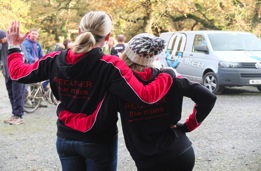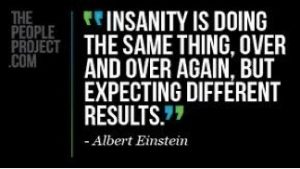Ready, Steady, Go
Exercise…
Some love it, some hate it, and some fear it. The positive effects of exercise on conditions such as diabetes, heart disease and obesity are well known.
But what about when it comes to pain and injury?
We are told that moving more is the key to injury prevention. But what exactly does this mean? What is the best exercise and how much? After all, we are always hearing about injured athletes, and they move around a fair bit!
Some exercise is associated with being ‘good’ for injury prevention. A whole industry has been built around the idea that core stability is the key. Yoga, Pilates, Swiss balls are all seen as the holy grail of exercise that can prevent a myriad of injuries. Other types of exercise are often demonised. Running, for example, is often reported to be ‘bad for the knees’, I even heard a physiotherapist (wrongly) perpetuating this myth!!
I frequently talk to clients who have had a recurrence of an injury, telling me they’d had some success in the past with rehabilitation exercises, but had stopped doing them (due to time, boredom, or just the fact their pain went away).
So often do I hear the phrase “I know I should be doing my exercises but…” In fact, just last week a patient commented that she “should be doing some core stability exercises but they are so boring”.
Now, sometimes, specific exercises are necessary when rehabilitating an injury, but that doesn’t mean to say you are doomed to a life of pain if you don’t perform these same exercises for all eternity.
The truth is, when it comes to exercise, the key is finding something you enjoy.

My client who thought core stability boring was delighted to hear some time at the climbing wall would be as effective as doing a Pilates class.
If you are bored, scared or simply doing it to stay pain-free, then you are likely to give up and return to the couch pretty quickly.
Admittedly, a new activity can be scary or hard when you first start out. The best way around this is to join a club with like-minded people.

Encouragement and support from those more experienced can help you through the hard times, and ensure you start at the right level, and making friends through a sport or activity will keep you going back
I once joined a mountain bike club whose members liked steep, fast and dangerous!! I spent every ride fearing severe injury (or even death). I soon gave up. But then I joined a club whose members enjoyed a challenge but had no aspirations to be hard-core downhillers. 4 years on, and I still love mountain biking.
When I joined the running club, I was worried I held everyone back as I’m slow on the hills, but encouragement from the faster runners meant I was spurred on to keep going (please note, I still don’t like the hills, but I’m now at the stage where I can at least enjoy the view from the top).
The great outdoors not your thing? Think outside the box when it comes to exercise. It doesn’t have to involve a pair of trainers. Join a Salsa class, or, if you are just starting out, don’t like meeting new people, or short of cash, then try walking. Call a friend for a walk around the park or organise a lunchtime walking group at work.
OK, so you’ve found your exercise passion, or you’re at least up and moving around. Does this now make you immune to injury? Unfortunately not.
Injury and its causes are often complex. But the focus of this blog is exercise. If you’re keen to know more about the complexities of injury, Tod Hargroves blog on a systems perspective is a great read.
Other than enjoyment, the other key to getting the most out of exercise is variety. If you do the same exercise in the same way, your body will adapt pretty quickly, and you won’t get the same benefits as when you start out. Keep your body on its metaphorical toes by mixing it up!

Learn a new dance routine that involves some moves that you aren’t familiar with. (Be sensible, though. Don’t go from a quickstep to doing high kicks and the splits in one session). Add some hills to your walk, progress to some power walking or even run-walk intervals. Maybe do some squats or step-ups on your way round the park. Revisit your playground days and try skipping.
Sports such as running and cycling are often associated with overuse injuries due to their repetitive nature. Varying route, terrain and pace can help, but incorporating a strength programme into your training can help prevent injury. Rehabilitation exercises often work due to their strengthening component as well as the novel movements they bring to your training, rather than correcting a so called faulty running or cycling technique. Check out Greg Lehmans blog for more about this.
Finally, for all you exercise junkies out there, remember, you can have too much of a good thing. Adequate rest is essential. If you’re wiped out from a busy day at work, lost sleep due to a crying toddler or suffering with a cold, that 15 mile run on your marathon schedule might do more harm than good. Learn to listen to your body rather than blindly following training programmes.
Hopefully this blog has inspired you to begin exercising, or maybe change the way you exercise.
Now get out there AND HAVE SOME FUN.
If you’re still not sure where to begin, check out our LINKS page for inspiration.
If you have an injury you are worried about, then don’t hesitate to get in touch.
